 |
Managing Performance: Performance-Planning Meetings (Instructor Guide) |
1.17 |
In this course you will learn to: identify the steps to conduct an effective performance-planning meeting, identify the process of providing feedback, and identify types of coaching, and document coaching and feedback efforts. |
 |
Managing Performance: Appraising Employee Performance (Instructor Guide) |
1.67 |
In this course you will learn to: understand the performance appraisal process, identify and gather appraisal material, prepare for an appraisal discussion, lead employees in an appraisal discussion, and respond to defensive employees and resolve conflict in an appraisal discussion. |
 |
Managing Performance: Legal Appraisals (Instructor Guide) |
0.84 |
In this course you will learn to: identify legal appraisals and responsibilities in relation to laws enforced by the EEOC, and identify risks of legal challenges and the importance of maintaining positive communication. |
 |
Managing Performance: Performance Improvements (Instructor Guide) |
1.34 |
In this course you will learn to: plan performance improvements, handle performance problems, and use effective communication to solve performance problems, conduct status meetings, and maintain documentation of ongoing communication. |
 |
Organizational Communication: Communication Basics (Instructor Guide) |
1.25 |
Good internal and external communication is crucial to any organization’s success.
In this course you will learn to: communicate effectively, define the theories of management, identify organizational types and characteristics, and plan communication flow.
This Instructor's Edition of this course includes notes and suggestions to assist you in presenting the material, whether in an in-person classroom setting, or as an instructor-led online or distance-learning course. It also provides you with the answers to questions found in mid-lesson activities, as well as in the quiz that concludes the course. |
 |
Organizational Communication: Leadership and Motivation (Instructor Guide) |
1.00 |
Organizational communication relies on the communication skills of employees, managers, and leaders. The competence of leaders is reflected in their communication skills. Communication skills also play a major role in differentiating a manager and a leader. To become an effective leader, you need to understand the theories of leadership. The structure of an organization also determines the ability of a manager.
Although motivation resides within an individual, organizations can affect motivation through communication. To motivate employees, management must clearly outline its expectations, goals, and rewards. Organizational structure can affect the communication used to motivate employees, as well as other types of communication within the organization.
In this course you will learn to: describe how communication skills and leadership are related, and define the theories of motivation, and identify motivational tools and the impact of nonverbal behavior.
This Instructor's Edition of this course includes notes and suggestions to assist you in presenting the material, whether in an in-person classroom setting, or as an instructor-led online or distance-learning course. It also provides you with the answers to questions found in mid-lesson activities, as well as in the quiz that concludes the course. |
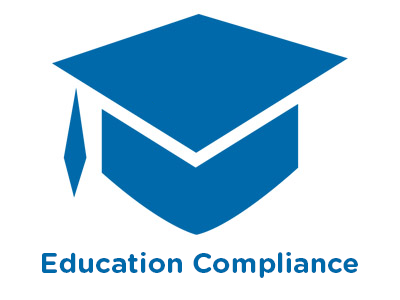 |
Overview of the Americans with Disabilities Act |
0.50 |
The Americans with Disabilities Act prohibits discrimination based on disability by protecting qualified individuals with disabilities from employment discrimination, and by requiring employers to provide reasonable accommodations. The Americans with Disabilities Act also protects qualified persons with disabilities from discrimination in many areas of higher education, including admission, academics, and research. It applies to all post-secondary educational programs, whether or not they receive federal financial assistance. |
 |
Geriatrics Block: Communication |
0.59 |
In Geriatrics Block: Communication, you will learn about the proper ways to communicate with geriatric patients. You'll learn about causes and signs of hearing loss and aphasia and how to recognize both in patients. You will discover how to effectively and properly communicate with older patients, including those who have hearing loss or aphasia. Challenges that commonly arise in communications between nursing home staff and EMS personnel will also be discussed. You'll learn about methods to avoid confrontational interaction, and will be able to identify ways to communicate effectively with nursing home staff to provide timely and appropriate medical care. |
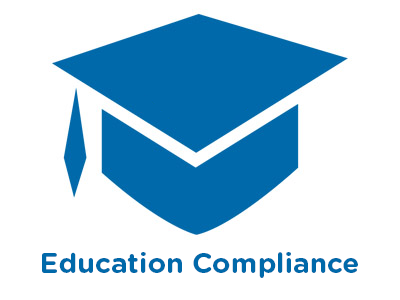 |
Conflicts of Interest |
1.00 |
A conflict of interest is a clash between personal interests and work requirements. It occurs when an individual’s personal interests, whether financial, professional, or social, including those of family and friends, compromise his or her judgment, decision, or actions in the workplace. Conflicts of interest matter because they compromise the quality of an employee’s decision-making, which reflects on higher education institutions. |
 |
Animal Welfare Spanish |
1.00 |
|
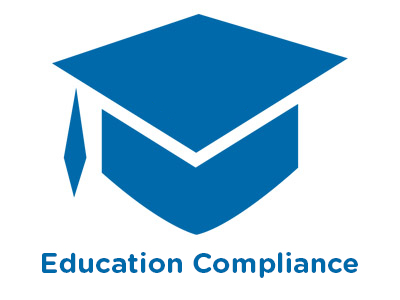 |
Data Security Training |
1.00 |
Data hacks in higher education are the second-highest category of reported industry breaches, accounting for 17 percent of all reported hacks. Resolving data hacks is expensive, costing anywhere from hundreds of thousands to millions of dollars. Understanding how to maintain data security is key to preventing hacks and keeping sensitive data private. |
 |
Foreign Corrupt Practices Act Training |
1.00 |
Higher education institutions are more global today than ever before. Colleges and universities work with students, instructors, and researchers from countries around the world. Colleges and universities also work with nongovernmental organizations, engage in joint ventures, participate in international foundations, and collaborate on research projects in other countries. The Foreign Corrupt Practices Act, or FCPA, exists to prevent corrupt practices in international business transactions. While it’s It’s tempting to think that the FCPA doesn’t apply to the world of higher education, it does. |
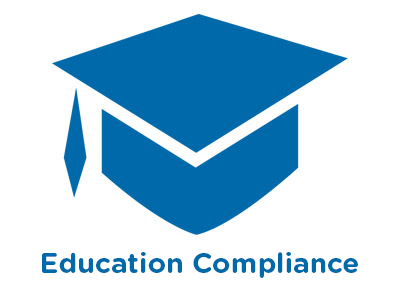 |
Export Control in Higher Education |
1.00 |
Colleges and universities are at the cutting edge of research in strategic technologies, microsystems engineering, astrophysics and imaging, and computing and information systems, among other fields. Our government controls the export of sensitive equipment, software, and technology as a way to protect our national security interests, and promote our foreign policy objectives. Export control describes the regulatory system in place to do so. |
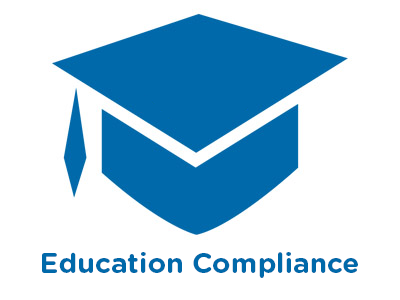 |
Harassment and Discrimination Prevention |
1.00 |
A respectful workplace is a key element in creating a fair, collaborative, and inclusive environment that allows every member of a higher education institution’s community to meet their teaching, research, and public service goals. At the heart of a respectful workplace is zero tolerance for discrimination and harassment. |
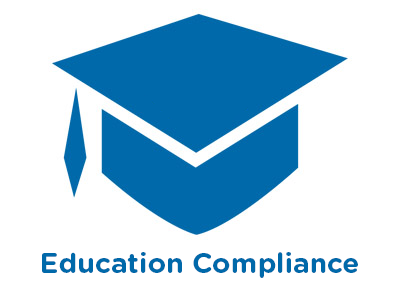 |
Conflicts of Interest (Corrections) |
1.00 |
A conflict of interest is a clash between personal interests and work requirements. It occurs when an individual’s personal interests, whether financial, professional, or social, including those of family and friends, compromise his or her judgment, decision, or actions in the workplace. Conflicts of interest matter because they compromise the quality of an employee’s decision-making, which reflects on higher education institutions. |
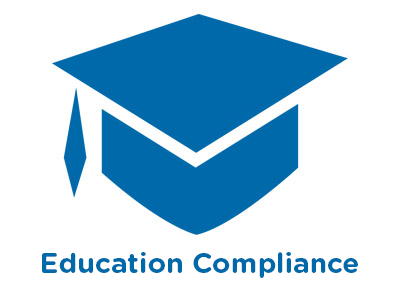 |
Clery Act |
1.50 |
When we talk about the Clery Act, we are actually referring to the Jeanne Clery Disclosure of Campus Security Policy and Campus Crime Statistics Act, and a series of other security-related disclosure requirements contained in section 485 of the Higher Education Act (20 USC §1092). The Clery Act requires colleges and universities to track and disclose information about crimes that occur on or near campus.
The basic requirements of the Act fall into six categories:
1. Campus crime reporting.
2. Timely warning notices.
3. Emergency notifications and emergency response testing.
4. Fire safety reporting and missing student procedures.
5. Notices to prospective students and employees.
6. Policy statements.
We’ll address each of these categories throughout this course. |
 |
Course 08: Human Relations Skill Development |
2.00 |
Being able to communicate effectively is an essential human relations skill for school-age care professionals. To be a good communicator, school-age professionals need to understand the components of communication and how the communication process works. They need to identify barriers to clear communication and develop strategies for minimizing or eliminating barriers to communication. School-age care professionals also need to work cooperatively with other team members to solve problems and conflicts. This requires an understanding of how teams work and the characteristics of effective teams. Assessing the current status of personal human relations skills helps each professional identify priorities for making improvements to these skills. |
 |
Course 15: Designing Effective Indoor School-Age Play and Learning Environments |
2.00 |
Planning effective environments is the first step to planning an effective program. When environments are attractive, interesting, and comfortable, they provide a backdrop for a varied program that can address the developmental needs of school-age children. The look and feel of well-planned environments send messages that let children know they are welcome and valued. They are inviting and encourage children to get involved and stay engaged with program activities and experiences |
 |
Course 23: Providing Homework Support |
2.00 |
The National Standard Objectives of Learning (SOL) have raised questions about the role of school-age programs in providing homework help and support. Research indicates there are many different ways to provide effective homework support in school-age programs. Some are more structured than others. When planning a homework support program, it is important for school-age programs to develop a homework philosophy that is consistent with the program’s overall philosophy and reflects current research on best practices for providing homework help. The homework philosophy should also reflect the needs of parents and children in the program and strike a balance between homework needs and other experiences that help children grow and learn out-of-school. When staff know how to design homework environments, identify appropriate homework materials, and use effective strategies to guide children’s efforts, homework support can be an effective component of ongoing programs. |
 |
Course 31: The Six "Ps" of Marketing School-Age Programs |
2.00 |
Effective marketing of OST programs is a systematic process that involves research, analysis, assessment of market trends and needs, short-term and long-term planning, and development of effective strategies to promote OST program services and develop a positive image of the program in the community. It is important for OST leaders to recognize that marketing is a far reaching process that includes, but is not limited to, advertising and publicity. When OST leaders take a comprehensive approach to marketing, their programs and projects have an excellent chance of success. Knowledge and understanding of the marketing process is an invaluable tool for OST leaders as they plan and implement new programs and projects, assess the stability and need for improvement of current programs, develop plans for new or expanded programs, and develop a positive public image of the program and its services. |
 |
Exploring Four Areas of School-Age Development (Collection) |
2.00 |
One of the most helpful ways to gain an understanding of the needs and interests of youth between 5 and 12 is to examine their development from four different perspectives: 1) Physical Development, 2) Cognitive Development, 3) Social Development, and 4) Emotional Development. It is important for staff to keep all four of these areas in mind when planning and implementing program activities and experiences. Keeping the four areas of development in mind leads staff to design a balanced set of experiences that nurture and growth and development of the "whole child." |
 |
Exploring Developmental Needs and Characteristics (Collection) |
2.00 |
Certain developmental needs and traits are associated with younger school-age children, while others are typical of older school-age children and youth. While the differences between school-age children of different ages are not clear-cut, there are some general traits and tasks that are often associated with younger (ages 5 – 7), middle (ages 8 – 10), and older (ages 11 – 12) school-age children and youth. Understanding these differences helps staff plan appropriate activities and guidance strategies for children of different ages. |
 |
Growing as a Professional: Health and Stress Management (Collection) |
2.00 |
An important part of professionalism in the school-age field is continued personal growth and development in relation to the field. This requires using appropriate resources and strategies to further individual professional development. In this course, we will explore professional development opportunities for school-age staff. |
 |
Human Relations Skill Development: Focus on Leadership Styles and Conflict Management (Collection) |
2.00 |
Research indicates that those in positions of leadership use a variety of different leadership and management styles. A person’s effectiveness as a leader is often directly linked to his or her leadership style. It is important for OST professionals to be aware of the assumptions and characteristics of different leadership styles. Knowledge of different leadership styles can help OST professionals reflect on their own leadership style and assess its effectiveness. It can also help OST professionals take a proactive approach to applying different leadership styles and techniques, depending on the situation.
Leaders also use a variety of different styles when it comes to managing and resolving conflicts. By understanding how to diagnose the causes and dynamics of conflict and understanding the characteristics of different conflict management styles, OST professionals can choose the best conflict management strategy for each situation.
There are a number of skills that enhance the ability of OST professionals to employ different leadership and conflict management styles effectively. When OST professionals are aware of these skills and their own skill levels, they can set priorities for ongoing development of leadership skills. |
 |
Emergency Animal Recall - Brown Bears |
2.00 |
Welcome to Emergency Animal Recall. This collection consists of an overview course which covers the fundamentals of Emergency Recall training for exhibit animals, including:
What exactly is Emergency Animal Recall, and why is it necessary?
What are the benefits of Emergency Animal Recall?
How do you generate support within your organization for a training program, and how do you decide which animals should be trained first?
What equipment will you need, and what preparations will you need to make?
What is the general outline of an Emergency Recall training program, and how do you maintain the conditioning once it has been established?
After completing this Overview, you can continue with the species-specific Brown Bear Emergency Animal Recall course. |


























